39 1/2 x 28 1/4″ (100 x 72 cm)
Traditionally in Africa many small, often ambulatory businesses have used hand-painted, hand-constructed signs to advertise their business. The business person may have an actual store front but more often just sets up shop along any street and moves around town from day to day as the business prospects appear better in different parts of town. In the case of people who sell medical products this is a very common option in all parts of Africa. To support those people in business there are very accomplished artists who make their living as commercial artists, painting signs for any business, itinerant or in a fixed location. This sign was painted by hand by a commercial artist for a person who sells such medical products. We have not investigated the precise nature of the medicine or medicines that this person (more likely a man, but could be a woman) is advertising. It could be more than one product but we do know that it is often a single bottle of a liquid purporting to treat all the ailments depicted on the painted sign. For people who have little access, primarily due to financial restrictions, to any other part of the modern medical care system, the man selling these products are de facto doctors. To my mind this is comparable to what used to be called in America “snake oil” or “snake oil liniment”. The entire phenomenon of the sale of this product and its advertising campaign as represented by this sign is reminiscent of the people in America who used to travel around selling a bottle of what was sold as a cure all for a range of diseases or abnormal physiological conditions. It was 100 years ago, in 1917, that the US Government sued such a seller for misrepresentation and misbranding the substance, thereby eliminating this incarnation of fraudulent health products. So far, to my knowledge, African governments have yet to take this step.
This sign features 6 images of people suffering from different abnormal conditions, each of which ostensibly treatable with the medicine being sold. The top left image is a man with no clothes squatting on the ground, defecating. The caption, written vertically to the left of the image is “Dysentry”, a misspelling of “dysentery”. The top center image is of 3 people, 2 men and a boy. The boy, unclothed, is being circumcised by a man wearing a red robe (boubou) and red kufi (skull cap) seated on what appears to be a trunk or a closed carton. The boy is seated on a tall 4-leg stool. The other man, wearing a blue boubou and a black kufi is standing, holding the boy, the boy’s father? The caption, horizontally written underneath the image is “pain-cutting”, presumably indicating the medicine relieves the pain of circumcision. The painted image at the top right of the sign is of a boy in stride, wearing yellow short pants and no shirt, with a distended stomach. This image in entitled, by a caption written vertically on the right side of it, “stomach pain”. The image in the bottom left of the sign is of an older man wearing a green boubou and a white kufi, bent over, walking with a cane on which he is relying for support. The caption, written vertically between the cane and the man, is “back pain”. The image in the center bottom of the sign is a boy wearing red short pants and no shirt, standing with his legs crossed and his hands holding his stomach. The caption reads “stomach ache”. I’m not sure what distinguishes this ailment from “stomach pain” in the above right image but we are more interested in the art than the medicine itself. The image at the bottom right of the sign is a man wearing long dark blue pants and a light blue short-sleeved shirt, standing with his right hand to his side and his left side apparently touching the front of his pants. There is no caption visible but since the veneer of the wood has been worn away just beneath him we presume there used to be a caption under the image. It appears that there is swelling at the front of the man’s pants. What ailment does this image imply is also to be treated? We can only guess.
The sign is painted on a thin piece of wood the top veneer of which has begun to separate a bit from wear around the perimeter of the sign, especially at the bottom right hand corner. As these salespeople are itinerant and display their wares anywhere they think they will get sales traffic the sign often ends up resting on the ground when it was in use. The top left corner appears to have been cut off diagonally. All over the surface of the painting there are small marks, evidence of use. This form of African art is contemporary; these signs continue to be made although currently the trend seems to be to more professionally printed signs on paper which is now cheaper than hiring an artist. This, therefore, is one of the last of a dying art. This sign was well used for some time but not so old as to have been worn as much as some of older signs. Except for the damage at the bottom the great majority of this sign is in good condition.
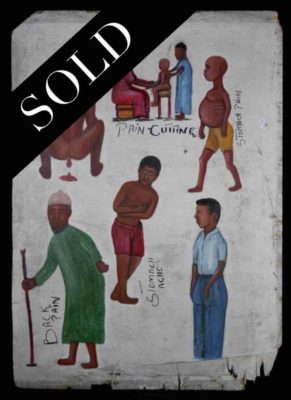
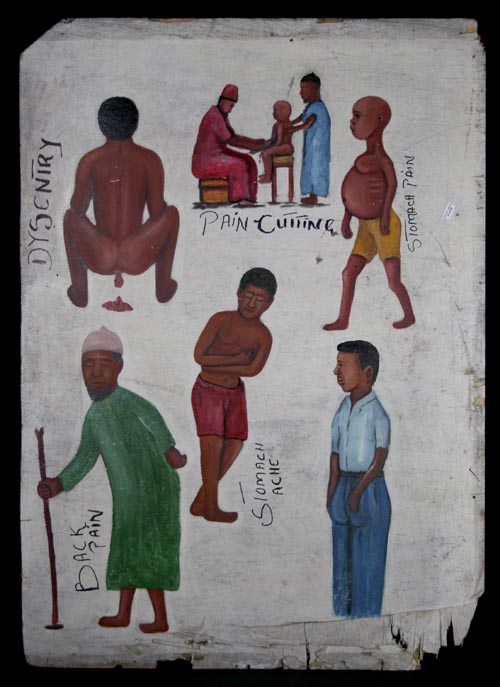
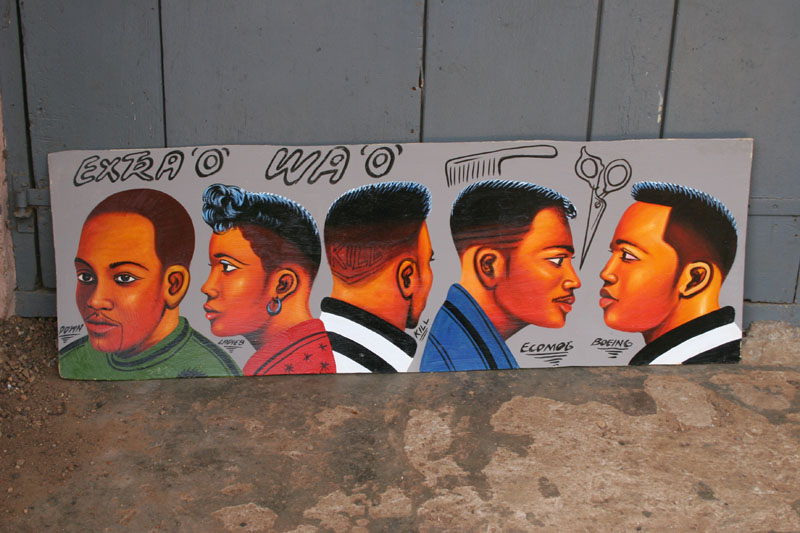
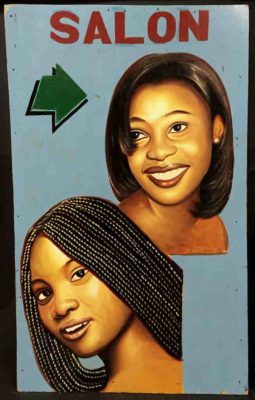
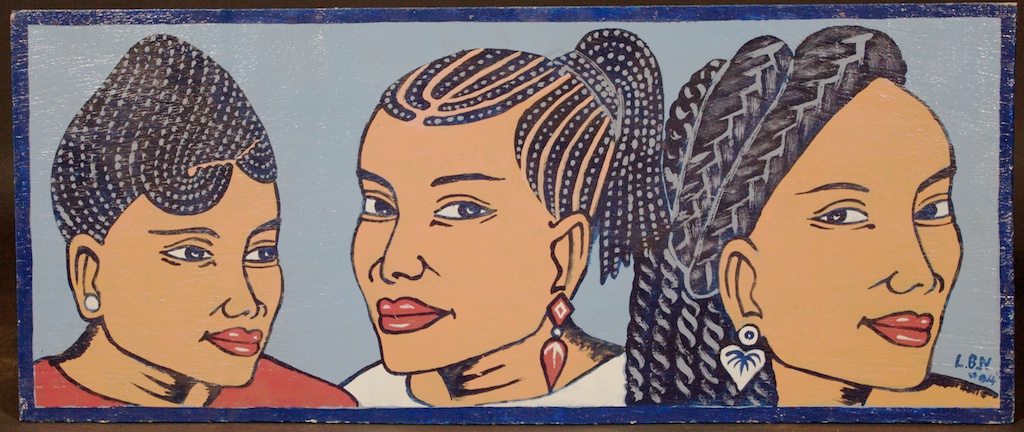
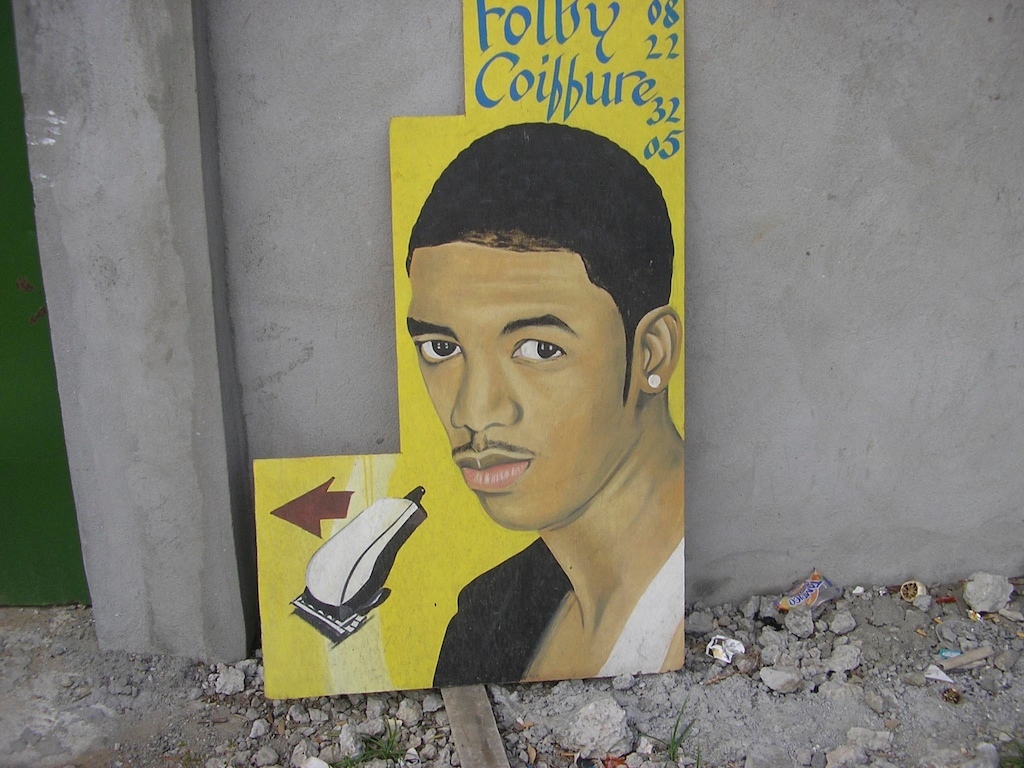
Reviews
There are no reviews yet.